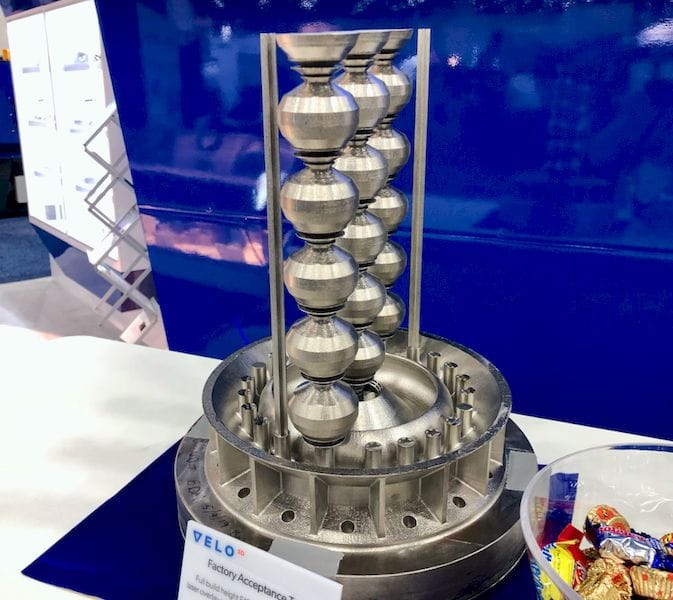![A large metal 3D print by Velo3D used as a factory acceptance test [Source: Fabbaloo]](https://fabbaloo.com/wp-content/uploads/2020/05/image-asset_img_5eb091b4dfe5e.jpg)
The 21st Century is almost 20% completed, and many manufacturing companies have still not adopted 3D printing technology. Why is this so?
I had a discussion with Velo3D’s founder Benny Buller some time ago and he described a nefarious situation that occurs all too often in big companies thinking of adopting additive manufacturing equipment and practices. I think this could explain the barriers some organizations are facing.
DfAM Benefits
The promise of 3D printing is considerable, as the technology allows companies to produce previously impossible parts to enable revolutionary products. It requires considerable creativity and expertise in 3D printing technology to do so, however. A recent development in this regard has been the new discipline of “DfAM”, or Design for Additive Manufacturing.
That’s the key to success for a company: if they can properly incorporate DfAM into their design processes, then a 3D printing migration/addition/experiment could be successful.
But some companies never seem to get there.
Barriers to Manufacturing Adoption of 3D Printing
It seems that one barrier could be organizational. As Buller describes the scenario, it goes something like this:
-
A large manufacturing company has decades of experience doing their work in a traditional manner. Processes, equipment, training and, most importantly, budget are all focused on traditional processes.
-
Incorporating a new making technology into a key manufacturing process is a significant undertaking, as clients must continue to receive high-quality products regardless of what’s going on at the factory.
-
Before a large-scale switch to DfAM can occur, the technology must be qualified within the organization to gain confidence among everyone that it’s a good thing to do.
-
Companies are generally unwilling to commit to producing essential parts with additive manufacturing processes due to the risk of the unknown, at least in their particular manufacturing process. Therefore, they dabble with smaller non-essential parts first in order to learn what it takes to actually perform production operations. Learn and mature on smaller, less important parts first.
-
The catch here is that these first few experimental parts require the organization establishing a “beachhead” in a new world of design and manufacturing, and that can be very costly. Making this step successful takes a lot of effort and cash.
-
The cash and resources required to overcome this initial step are sometimes so enormous that the organization at higher levels is unwilling or even unable to commit to proceeding.
Thus things remain in limbo, or, as Buller puts it so well, they are “Stuck in the Doghouse of the Future”.
This is a problem for manufacturers of industrial-scale 3D printers, who would certainly love to break into large organizations that might purchase dozens or even hundreds of machines. If these companies only knew — organizationally — how to use them confidently, then perhaps they would be able to buy.
How To Adopt Additive Manufacturing?
What can be done here? One option is to simply wait it out, as today’s engineering schools are increasingly teaching DfAM or similar practices, which eventually will result in companies staffed by those more willing to adopt technology. But that could take many years, perhaps even decades for change to fully wash over the industry.
Another option, which I suspect some major 3D printer manufacturers are pursuing, is to take up some of the leg-work required by a company transforming to additive manufacturing practices. This could be done by providing easy-to-use corporate packages that might provide ways to fit the technology into company processes, certifications, practices — and budgets. However, that is quite challenging because companies tend to have different practices and cultures.
It’s certainly not an easy barrier to overcome, but nevertheless, I see transformations slowly happening. Consider the aerospace industry, which somehow spent massive effort to adopt the technology over many years. However, they had a huge carrot waiting for them at the end: lightweight parts that could directly translate into major revenue. For many other industries, that financial equation has yet to be identified.

